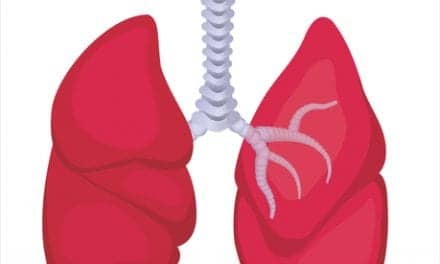 Air Pollution Affects Children’s Lung Growth
Air Pollution Affects Children’s Lung Growth
Recent evidence now shows that ambient levels of air pollution produced significant effects on children’s lung function growth rate. In a study appearing in the first issue for July of the American Thoracic Society’s peer-reviewed journal, W. James Gauderman, PhD, of the Department of Preventive Medicine at the University of Southern California School of Medicine, Los Angeles, writes about his study of 1,678 Southern California fourth graders between 1996 and 2000.
With 11 colleagues, Gauderman noted in the American Journal of Respiratory and Critical Care Medicine that substantial deficits in lung function growth rates were connected to exposure to acid vapor, nitric dioxide, particular matter, and elemental carbon. The average annual growth rates for forced expiratory volume in 1 second (a standard lung function test known as FEV1) were reduced by 10%, and maximal midexpiratory flow by 5%.
Researchers found the hours between 3 pm and 6 pm to have the highest pollution levels. During that time, the children studied spent an average of 1.3 hours outdoors. Acid vapor was the pollutant shown to most consistently affect lung function growth. The article points out that the children who spent more time outdoors suffered a more significant pollutant effect. Further research may determine whether these pollution-related deficits in lung function growth persist into adulthood.
 Smokers in Family Linked to Child Asthma
Smokers in Family Linked to Child Asthma
A large study published in the second issue for July 2002 of the American Journal of Respiratory and Critical Care Medicine found an association between smoking by family members and an increased likelihood of asthma diagnosis before age 6 for a child in the home. The study also found that with smoker(s) in the home, young people are more likely to start smoking earlier and more heavily.
David Jacobs, Jr, PhD, of the Division of Epidemiology, School of Public Health, University of Minnesota, Minneapolis, with six associates, measured lung function in 4,000 black and white men and women who were initially ages 18 to 30 during 1985 to 1986. They followed up with these subjects 2, 5, and 10 years later. Participants were questioned about their respiratory health, cigarette smoking, physical activity, and medical history.
Among the participants, 50% said their mother smoked, and two thirds said their father did. Almost 44% of those studied had ever smoked. The prevalence of asthma at age 6 or younger was 2.8% with no smokers in the family and doubled to 5.6% when one family member smoked.
| Study Finds Oral Care Key to Preventing Pneumonia A new, retrospective study indicates that a comprehensive oral care protocol may reduce the incidence of ventilator-associated pneumonia among intensive care unit (ICU) patients. Research results appear in the spring/summer issue of the Journal of Advocate Health Care and include suggestions for how to revise hospital policy and procedure. The study, “The Effect of a Comprehensive Oral Care Protocol on Patients at Risk for Ventilator-Associated Pneumonia,” was conducted in the ICU at Advocate Good Shepherd Hospital in Barrington, Ill, from January 1999 to December 2001. ICU nursing staff identified several best practices, including brushing a patient’s teeth every 2 to 4 hours and suctioning oral secretions in the oral cavity and subglottic area. After the protocol was introduced, the VAP rate dropped from 8.7 to 2.2 per 1,000 ventilator days. The study concludes that effective, evidence-based care can also play a major role in reducing costs. OSA Increases Heart Disease Yuksel Peker, MD, PhD, of the Department of Pulmonary Medicine, Sahlgrenska University Hospital, Gothenburg, Sweden, with four colleagues, found that at least one cardiovascular problem occurred in 22 of 60 men, ages 30 to 69, with OSA, compared with eight out of 122 without it. In the OSA group, heart disease was noted in 21 of 37 incompletely treated patients, but occurred in just one of 15 who were effectively treated. The subjects were studied over a 7-year period, and the researchers found that the most significant predictor of the development of heart disease was the presence of OSA at the study’s onset. |










